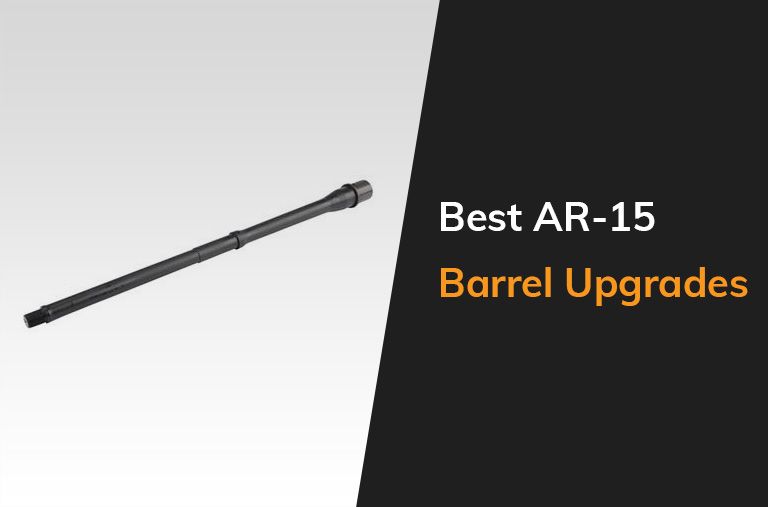At a Glance: Best AR-15 Barrel Upgrades
- OUR TOP PICK: Faxon Firearms – AR-15 Gunner Barrels
- Daniel Defense – AR-15/M16 5.56 Hammer Forged Barrels
- BEST BUDGET OPTION: Rainier Arms – AR-15/M16 223 Wylde Match Barrels
Comparison of Best AR-15 Barrel Upgrades
| PRODUCT | DETAILS | ||
|---|---|---|---|
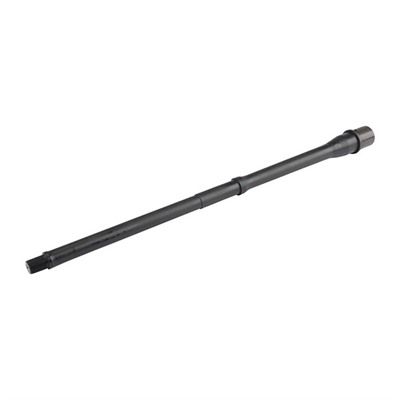
Our Top Pick
|
Faxon Firearms – AR-15 Gunner Barrels |
|
View Latest Price |
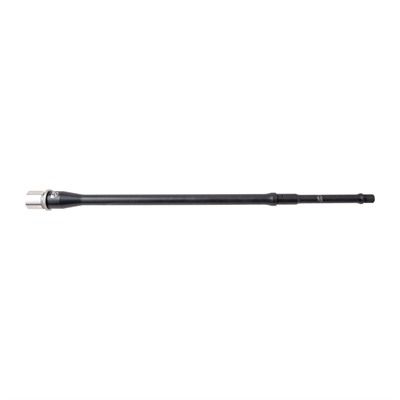
Our Top Pick
|
Daniel Defense – AR-15/M16 5.56 Hammer Forged Barrels |
|
View Latest Price |
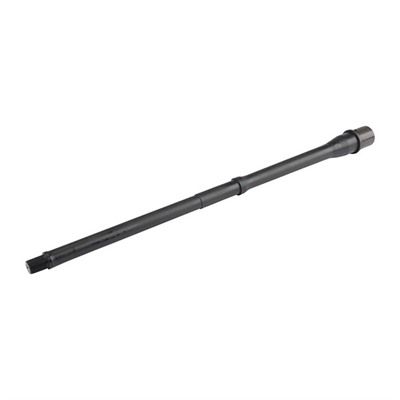
Our Top Pick
|
Rainier Arms – AR-15/M16 223 Wylde Match Barrels |
|
View Latest Price |
Guide to the Best AR-15 Barrels on the Market Today
One of the most popular modern semi-automatic rifles is pushing boundaries when it comes to customization. One of the options is choosing the right barrel configuration for your AR. There are a lot of aftermarket configurations out there, but only a few are worth mentioning because of their small weight and ease of installation. You can select them depending on your needs and by who makes it. The bottom line is, your choice will vary depending on your usage whether it is for home defense, competition or global world apocalypse.
Faxon Firearms AR-15 Gunner Barrels
If you’re not willing to spend too much money, or are low on cash but still want to buy a good quality barrel, then the Faxon Gunner Profile is a great option for you. It’s light, accurate enough, and it will probably last you a long time. The first impression I had of the barrel was its excellent finish and overall good quality, which gives off the impression of quality production. When it comes to installation, just like with most barrels, it is fairly trouble-free, so you don’t need to worry too much about that.
Specifications and description:
The Faxon GUNNER line of AR barrels is well known in the AR world for its unique profile. The GUNNER profile uses the Government profile dimension from extension to the .625″ gas block, then is a pencil profile from the gas block forward to the front.
Removing the weight from the front of the barrel ensures maximum versatility. The barrel is made of 4150 CMV Steel. Barrel type is Button Rifled with caliber 5.56 and twist 1:8, length 18″ and weight 1.44 lbs.
Pros
- Lightweight
- Budget affordable
- Easily installation
- Accurate
Cons
- It heats up easily
- Vibration is one of the downsides
Daniel Defense AR-15/M16 5.56 Hammer Forged Barrels

When budget is not an issue, I suggest Daniel Defense’s Hammer Forged Lightweight Barrels. These barrels are cold hammer-forged.
At first glance, the barrel looks, well, not so interesting, but I assure you, that doesn’t mean the barrel lacks quality. Similar to other models, the installation procedure is simple and straightforward. There is no noticeable overheating during the heavy use of the barrel. This barrel is designed to significantly increase your accuracy and precision, so whether you’re a novice or an advanced shooter, this barrel will surely leave you speechless.
Specifications and description:
Cold Hammer Forging of barrels has been known for decades to produce the most accurate, longest lasting rifle barrels obtainable.
The barrel extension has M4-type feed ramps. 5.56×45 barrels come in 10.5″, 14.5″ and 16″ lengths, with the shorter barrels featuring carbine length gas system. Barrels are available in lightweight or government contours, and M4 for the 14.5″ length. The barrel type is SKU16″ Mid-Length LW Barrel with caliber 5.56 and twist 1:7, length 16″ and weight 1.35 lbs.
Pros
- Lightweight
- Accurate
- Long-lasting
Cons
- Not so cheap
Rainier Arms AR-15/M16 223 Wylde Match Barrels

For those on a tight budget, my recommendation is to check out the Rainier Arms Mountain Series mid-weight barrels. The finish of the barrel is fantastic. The group of hits was fairly tight and compact, even when using different grain ammunition.
The only downside is the weight of the barrel, being on the heavier side it can possibly offset the balance of the entire rifle. But if you’re willing to trade a slight increase in weight for improved accuracy, then this may be an excellent choice for you.
Specifications and description:
Beginning with a precision match blank with a 1-8 twist, Rainier then machines these barrels to the highest quality and contour to suit your needs. Barrels are chambered in 223 Wylde, to get the utmost performance out of your ammunition. Available lengths include 14.5″, 16″, and 18″.
Barrel extensions feature M4 feed ramps and muzzles are threaded 1/2-28. 14.5″ & 16″ barrels feature mid-length gas systems, with the longer 18″ has a rifle length gas system. All barrels are .750″ at the gas block. The barrel has been chambered in .223 Wylde so it will let you shoot with a .223 Remington and 5.56X45 NATO. The barrel is in caliber 223 Remington, 223 Wylde, 5.56 mm NATO and twist 1:8, length 16″ and weight 2.125 lbs.
Pros
- Budget-friendly
- Available in different lengths
- Made from high-quality steel
- Available in three different variants
- A 1:8 twist rate for heavy and light ammunition.
- The barrel is chambered in .223 Wylde so it will let you shoot with a .223 Remington and 5.56X45 NATO
Cons
- Heavy
Geissele Automatics AR-15 Barrel Assemblies With Gas System 5.56mm
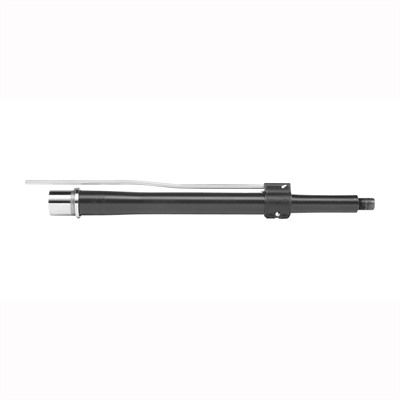
Here we have a barrel that’s worth the wait and money, but it is definitely worth buying. Major downside is the weight of the barrel, however, when you get used to it, the precision and accuracy will leave you speechless.
As I’ve mentioned, the barrel is quite heavy, so after some time, the rifle can become cumbersome to carry and handle. Like all products from Geissele, this barrel is quality made. The finish is fantastic and the barrel is made to meet the standards.
Geissele Automatics was established in 2004 as a manufacturer of trigger mechanisms for the AR15 rifle, but very soon they started manufacturing other parts for one of the most desirable semi-automatic rifles. They are recognizable by the high-quality workmanship and excellent finish of their products.
Specifications and description:
This is an in-house Geissele 11.5″ or 16″ Nitride, Heavy Profile button barrel with a 1-7 twist rate, made of stainless steel. This package includes Geissele’s Nitrided Super Gas Block and a high-quality Gas Tube. Their barrels are precision machined and button rifled, utilizing the highest quality materials available. This is the same barrel featured in the Geissele Duty Uppers. The Gas Tube comes pre-assembled to the Gas Block. The barrel is pre-dimpled for the Gas Block’s set screws to aid during installation. If you want to take the extra step to pin/bomb-proof your Gas Block, a rolling pin is included as part of the package. The barrel is in caliber 5.56 mm NATO and twist 1:7, length 11.5″ or 16″ and weight 1.63 lbs and 2.2 lbs.
Pros
- Long-lasting
- High-quality
- Precise finish
Cons
- Really heavy
- Can’t really fit in the budget
FN AR-15/M16 5.56x45mm Cold Hammer Forged Barrels
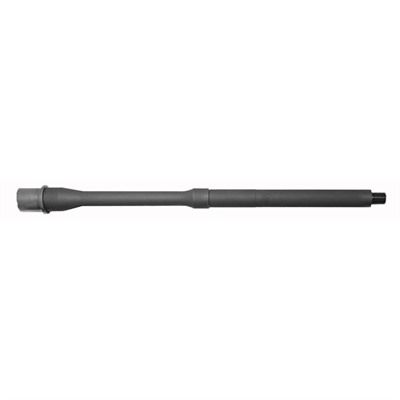
FHN USA has a more than a 100 years tradition of exceptional barrel manufacturing, and they perfected the cold hammer forging process, so the quality of their products is realy unquestionable. The barrel looks and feels fantastic, you won’t find any weakness, barrel itself is fantastically forged so you can’t find any soft spot because there aren’t any. Accuracy is remarkable and really enjoyable. This barrel is fit to plan in a budget, it’s relatively cheap.
Specifications and description:
These AR-15/M16 barrels are hammer forged using the same proprietary high-grade Chrome Moly Vanadium steel used in FN’s venerable machine gun barrels produced to handle the punishment of sustained fully-automatic fire. Currently available in a chambering of 5.56x45mm in 14.5″ Carbine, 16″ Carbine, 16″ Mid-length, and 18″ and 20″ Rifle length gas systems, FNH USA Hammer Forged Barrels will provide you with a Distinct Advantage, no matter your application. All models are .750 at the gas block. The barrel is chambered in caliber 5.56 mm NATO and twist 1:7, length 14.5″, 16″, 18″, 20″ and weight 1.6 lbs, 1.8 lbs, 1.9 lbs, 2.05 lbs, 2.25 lbs.
Pros
- Fits in any budget
- High quality
- Accurate
- Long-lasting
- Available in different lengths
Cons
- Heavier rifle when it’s installed
Wilson Combat AR-15 Recon Barrel 5.56
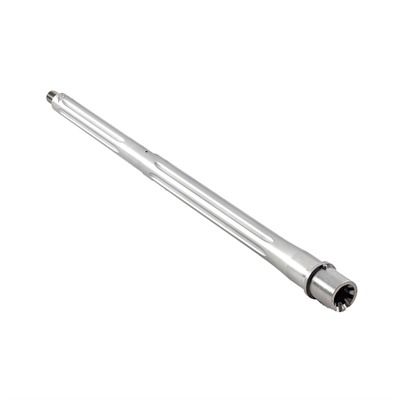
What to say about this barrel, well except WOW, so light, the finish is fantastic and that stainless steel look visually looks impressive. You can use various grain bullets, without reducing precision or jamming. Twist rate is fantastic, one of the things why will I choose this one. I don’t even have to mention the lifespan, once purchased, you don’t have to think about that, but more frequent cleaning is one of the downsides, so that lifespan will be extended. It is noticeable a little bit more recoil, but that’s because of the gas system of the barrel itself.
Specifications and description:
Like all of the other options in the company’s match-grade barrel lineup, the Wilson Combat AR-15 Recon Barrel is machined from 416R stainless steel, which provides a superior level of accuracy for the entirety of its long service life. The barrel is machined to accept a mid-length gas system and is compatible with all standard .750-inch gas blocks, making it perfect for your next build. Barrel is chambered in caliber 5.56 mm NATO and twist 1:7, length 16″ and weight 32 oz.
Pros
- Can shoot from low to high grain bullets
- Lightweight
- Maximum durability and long-lasting
Cons
- Higher rate of deformation of a bullet when firing
- More frequent cleaning
- A little bit more recoil then it should be
Criterion Barrels – AR-15 Barrels, Fluted, Stainless Steel, Rifle-length
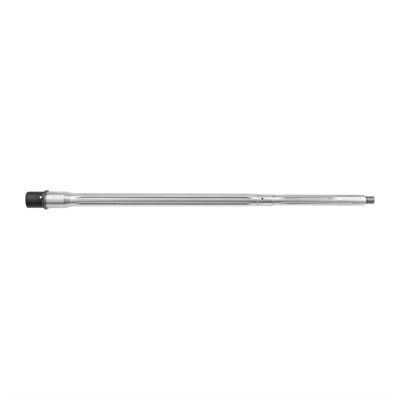
This barrel belongs to a group of budget ones, price is fairly so it’s one of the cheaper ones, but does it worth it? Yes, it definitely does, it performs really good. It’s even better on long-range shooting. It has less recoil, but a gun is a little heavier for carrying longer. But if you take a look at the chamber, it’s unreal, really gorgeous, the finish of a product is outstanding. Is it worth buying? Definitely yes.
Specifications and description:
Criterion fluted AR-15 barrels are designed to ensure maximum concentricity and consistent dimensions throughout the full length of the bore. Eight flutes are machined around the circumference of the barrel to the front and rear of the gas port. Each flute is polished to smooth jagged edges while retaining a sharp appearance. Each 416R stainless steel barrel comes complete with an M4 barrel extension and a .223 Wylde chamber designed to accept both .223 Remington and 5.56 NATO cartridges. The barrel is chambered in caliber 223 Remington, 223 Wylde, 5.56 mm NATO and twist 1:7, length 18″, 20″ and weight 2.15 lbs, 2.25 lbs.
Pros
- Lower price
- Long-lasting
- Excellent for long-range
- Low recoil
- Can accept both .223 and 5.56 mm NATO
Cons
- Heavier gun
- More frequent cleaning
- Better perform on a long-range
CMMG – AR-15/M16 5.56mm Barrels
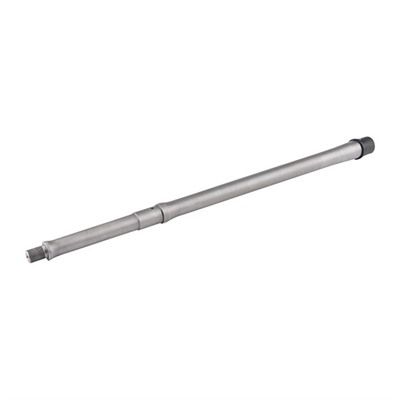
A few years back CMMG was one of the best in making barrels you could find, even now they are not at the top, and they use old 4140 steel, but their barrels are perfect. But there is one tricky part when it comes to installation, you’ll need to purchase a few other components so you cold fit everything, but besides that, you will be good to go. Accuracy is fantastic on 100 yards, so that’s a plus. It can be classified on a budget side, but the downside is that is on a heavier side, so carrying all day it’s not really an option.
Specifications and description:
Chambered in 5.56mm NATO, these medium profile barrels feature a 1-7 twist with 1/2″-28 muzzle threads and accept .750″ diameter gas blocks. Barrels are available in either 416 stainless steel or 4140 chrome-moly steel with a nitride finish. Select either a 12.5″ barrel with a carbine length gas system, 16″ barrel mid-length gas system, or an 18″ barrel with the rifle-length gas system. The barrel is chambered in caliber 5.56 mm NATO and twist 1:7, length 12.5″, 16″, 18″.
Pros
-
- Budget affordable
- Long-lasting
- High durability
- Excellent for long-range
Low recoil
Cons
- Old steel made
- Heavy for all-day use
- Can feel vibrations
- Frequent cleaning
Choose Your Next AR-15 Barrel
If you are new in these waters and you just purchased your first AR-15, then your rifle must have a lightweight profile with chrome lining. But if you are that guy, who wants to be ready for an upcoming zombie apocalypse, and want the best-customized AR for maximum effect, then you are in right place. First thing you need to know for what purpose is your AR. Is it for protecting your home, shooting range or hunting, that is what you need to think about. Profiles usually fall into one of these categories: lightweight, government, and heavy.
Out there, you can pick a lot of aftermarket barrels, and regarding on your needs, you can easily pick the right one for you. There are short or long barrels. The short barrel is not designed to engage long-range targets and will be harder to get those shots on the bulls-eye due to reduced muzzle velocity. A short-barreled AR is designed for maneuverability and easy target acquisition in shorter range situations.
One of the things you need to consider is what kind of ammo you are going to use. The best choice is to get a 5.56 barrel because it will allow you to shoot both 5.56 and .223 ammo.
There is also a Barrel twist rate, and it’s best to choose 1:7 or 1:9 ratios for long-range targeting because you can shoot 55 or 62 grain bullets.
Chrome-moly steel or Stainless Steel AR-15 barrels
When customizing your AR-15, the type of barrel you select will have a noticeable impact on your shooting experience and the overall quality of your rifle. There are two major categories: chrome-moly steel, with a chrome-lined bore and chamber, or stainless steel. So which type is best suited for your gun?
Well, it depends on what kind of shooting you’re doing. But first, a general overview:
4150 Chrome-moly Steel
Chrome-moly means chromium molybdenum alloy steel, the usual material for gun barrels, and other parts.
Chrome lined means that the bore and chamber of a barrel have been plated with metallic chromium. It is more heat, chemical, erosion, and abrasion-resistant than bare chrome-moly steel or even stainless. Chrome lined barrels last much longer than unlined barrels, so if you are conducting a war or otherwise blasting off a lot of ammo with moderate accuracy requirements, it is desirable.
The most popular kind of barrel material is chrome-moly steel, specifically 4150 chrome-moly steel. There are only slight differences between the 4150 and the 4140 forms, and while the 4150 is the standard for the U.S. military, the 4140 may do for the average sport shooter. Chrome-moly steel is strong, hard, and highly durable.
One of the important factors when selecting a barrel is whether or not it’s chrome lined. Chrome lined barrels have a layer of slick, hard chrome on the inside bore. While it extends the life of the barrel, is easier to clean, and is more corrosion resistant, long-range accuracy is affected by the fact that chrome-lined barrels are slightly uneven. Another factor to consider is whether your barrel is rifled or not—this means that it has spiral grooves cut into the bore that causes the bullet to rotate and stabilize. Chrome lining protects the rifling of the barrel.
416 Stainless Steel
Stainless steel barrels, specifically 416 stainless steel are for those who are willing to spend more money, but that’s an indication of the quality. This type of stainless steel isn’t like the one that we use daily in our lives, it’s made with high amounts of chrome and sulfur in the steel, which makes it able to be manufactured with great precision. 416 stainless steel has the ability to burnish so it is easier to clean. They typically are not chrome-lined, which contributes to their superior accuracy.
If you’re looking for medium-range target shooting, or for defense purposes, chrome-moly steel will certainly serve your purposes. But if you want to be able to maintain accuracy over time, perhaps for competition purposes, stainless steel is the clear winner.
Do I want a chrome-lined AR-15 barrel?
The first thing that you need to know is that probably you will never shoot out chrome-lined barrel. It’s made to have a “long lifetime”, so you can’t wear it out. That means that wearing out the barrel, will become evident when you can visibly see your chrome disappearing in your bore, and that won’t happen. It is much easier to clean and a lot faster, so that’s another way to expand your barrel’s life.
There are many people who argue chrome-lined barrels are less accurate than an otherwise identical steel barrel. All things being equal, this is true, but for most shooters, the degree to which accuracy is lost by using a chrome-lined barrel is generally unnoticeable, or practice to perfection as I love to say. So the bottom line is, it’s all up to you, maybe on long-distance shooting you won’t shine, but on a middle range, you can be a star.
Profiles: AR15 barrel weights
As I wrote before, there are different types of barrels classified by type of material, length, and caliber, so from there, weights are different from type to type. Weight can start from 0.3 lbs and can go to even 2.5 lbs, in some cases even more.
If a barrel is heavier, the rifle will be more balanced, so precision will be better on a long-range shooting. But downside on those barrels is carrying it around, the rifle is much heavier and you can feel that after a while. If you want your AR-15 to be light enough, it’s not just a barrel that you need to choose, it’s that finish customization at the end and all the accessories you will mount on your rifle. When you are choosing the right barrel for your purpose, it is wise to look for the weight so you will know at the very end what you got as a finished product.
Do I need a fluted AR-15 barrel?
There are always different opinions. According to some, it is the answer to all your desires, and for some, it is even a waste of money. For some, a fluted barrel is just an aesthetic solution and has no significant purpose. Even so, to be straightforward, this barrel Is cooling faster, it also heats up faster because there’s less metal involved.
Fluting also shaves weight from what is usually the heaviest single component of the shooting system. As an example of how much weight can be reduced by fluting, consider two barrels of identical length and contour, one fluted and one not. So that means that the barrel can easily get warp or crack. Well no, I won’t tell that in some cases this is not true, but trust me it is really an answer, this barrel is fantastic, and you can choose it or not as always depending on that small thing for what you really need your rifle.
There is a lot of room to debate, and maybe there are some cases that this happened, but I don’t think that even this barrel can crack so easily after a few hundred rounds.
But there is a positive side, these barrels can’t crack so easily, there’s weight savings, improved barrel rigidity, and better heat dissipation.
Lightweight, Medium, Heavyweight, Hanson
There are really a lot of aftermarket barrels out there. But how will you know which one is best suited for you? As I mentioned before there are a few basic categories so you can easily find the right one for you. So let’s say a few words, and hope this way I will help you how to choose that right one for you.
Lightweight Barrels:
They also call them Pencil barrels, they are easier to carry, a rifle is lighter, you lose a little bit of that accuracy on a long-distance shooting. You can lose that durability too, but is that going to happen after a few thousand shoots? Well no, it can suit you for years, and it can still look good. If you are a hunter and want those long-distance shots, this barrel is not for you. Then you need to consider other solutions. On the other hand, if you are new in this game, my opinion is for your first setup to choose one of the lightweight barrels.
Medium barrels:
Well this type of barrels are a little bit expensive, and if you want to get one of these, then don’t think about money, just pay for the best one.
These barrels are heavier than light ones, so that means that the rifle’s mass will go up. And that’s not really suitable to carry all day, but that won’t stop you right? The best thing that you pay for is tight groups and consistent performance, all day, and you pay for durability too. Maybe this is not a “budget” one, but definitely, this has to be one of the options for you.
Heavyweight barrels:
These barrels can’t classify as budget ones. They are much more expensive, but with that, you really buy quality and maximum durability.
These barrels are made for those who want to get that maximum from a long-range shooting. In this case, a rifle is more balanced and with that, you get better precision. The downside is that they are heavy enough, and let me explain what that means, after you carry a rifle for a while, you will fill it. Heavier barrels have more durability because they provide the most resistance to the pressures of heat while firing, and trust me, they are worth your money. You won’t go wrong if you choose one of them.
Hanson barrels:
This barrel definitely is classified in budget ones. It is extremely light and reliable to the bone. You can fire a thousand of ammo and accuracy will not change, even if you are a fast shooter, and you burn that number of ammo through a day. I am talking on medium-range targets. But the accuracy doesn’t stop there if you have a better setup, and you can engage long-range targets, just do, you will be happy with those results. The best thing is because of the system and placing more weight and material near the chamber to help reduction of heat better. That means that the barrel won’t heat up too much, which won’t affect your accuracy, even if you engage targets fast. These barrels should be on a list to think about.
Choosing the right AR-15 barrel twist rate
Before choosing your best-suited barrel twist, you need to know what the barrel twist rate is. To be precise, it refers to the speed at which the rifling imparts spin to the projectile. With faster rotating, the bullet Is stabilized, and what that means that the bullet will fly better and straightforwardly. But that’s not the only thing that needs a projectile to move better and straightforwardly, there is something like velocity, bullet weight, shape, and bullet diameter.
Today, on a modern AR-15, you can find twist rates like 1.7, 1.8 and 1.9. What do those numbers mean? Well, that first number is a full rotation of the projectile, and the second one is how many inches do the projectile have to go down the bore for a full rotation. So now you are a little bit closer to find the best barrel for your setup.
Choosing the right AR-15 barrel length
So what will you get if you have a longer barrel on your AR? Better accuracy? Well no, your accuracy will remain the same, on a shorter or longer barrel. The only thing you will get is increased velocity. What does that mean? The projectile will travel faster. When you fire that round, gas builds up inside the barrel, so it’s forcing the projectile inside to go out. Longer the barrel, gasses are trapped longer inside, so projectiles can spin appropriately, a projectile with a combination of velocity and stabilization gets trajectory and distance. The best AR-15 barrel is the one suited for you and your needs.
Manufacturing methods: cold hammer-forged, milled, and button rifling
Cold hammer-forged barrels are one of the most popular among lovers of AR-15. For your money, you get quality, long barrel life and the best high performance with rapid-fire. So how is it made? Here are some technical information:
– Cold-hammer forging a barrel involves taking a barrel blank and forcing a mandrel with the reverse imprint of the barrel’s rifling into the blank. Hammers then beat the barrel blank around the mandrel in a process called rotary forging. This will give the barrel it’s the final shape and forge the rifling’s lands and grooves inside. The finished barrel is then squeezed up and off the mandrel.
Milled or Mil-spec methods refer to all Military specifications or standards. Mil-Spec barrels are made of chrome-moly steel with chrome-lined bores. This is very important for military specs in wet and saltwater environments. So they always follow (manufacturers), very specific dimensions, measurements and tolerances to assure compatibility and reliability. The best thing that you get for your money is Extended barrel life, Corrosion resistance and Ease of cleaning. The biggest disadvantage of chrome-lined barrels is long-range accuracy. Why is that? With our technology today, when a barrel is chrome-lined, it is not perfectly even. And I will repeat myself, this is ONLY noticeable at long-range shooting (more than 200 yards).
Button rifling barrels are manufactured under extreme pressure like CHF barrels but in a different way. Button-rifled barrels also use a mandrel to carve out the rifling’s lands and grooves. Unlike cold-hammer forging, a button-rifled barrel is finished by literally ramming the mandrel through the barrel in one pass, using a large hydraulic press. This is how it’s made, but the problem is now because of advancements in cold hammer forging and cut rifling, this type of barrels are fallen out of the AR-15 market. They are really expensive to make and maintain.
How to Install an AR-15 Barrel
Before starting anything, first, check your rifle, is it empty. How to do it?
- Muzzle in a safe direction.
- Safety to “Safe”.
- Drop the magazine and then open the bolt with the charging handle making sure that it stays back.
- Visually inspect the chamber and the magazine well to make sure there are no cartridges in either.
- At that point, you can safely allow the bolt forward and, pointing the muzzle in a safe direction, pull the trigger.
Now you can start to disassembly your AR. So what’s the next step?
The first contact, well it looks like it’s not that hard to install a new barrel. But to be honest, well it is hard enough.
The best for you and your rifle, if you are a novice, is to go to your nearest gunsmith, and allow him to change the barrel on your AR.
First, you will need some special tools such as:
- Vice mounted to worktable
- Vice block
- Armorer’s wrench, with barrel nut tool, muzzle tool, and 1/2in fitting for 1/2in torque wrench
- Set of wrenches
- Plastic punch
- Level
- Firearm grease
- Shop rags
Remove the upper receiver, which includes the barrel and handguard, from the lower receiver of the AR-15. This is an easy task, which requires removing two pins. After removing the upper you will want to remove the bolt, bolt carrier, and charging handle and components by sliding them out from the upper.
Place the upper into the vice block and then place the vice block securely into the vice, with the Allen screws on the gas block facing upwards. Remove the handguard by pushing the delta ring towards the upper receiver. Then, pop off one side of the handguard, and then the other. Remove the flash suppressor and peel washer using the muzzle tool on the armorer’s tool. Remove Allen screws from the gas block. Use the barrel nut tool on the armorer’s tool to loosen the barrel nut attached to the delta ring assembly. Then remove the delta ring assembly by sliding off the barrel and away from the upper. Carefully slide the barrel out of the upper making sure not to scratch or damage the barrel extension and barrel-indexing pin. Now you finished removing the old barrel, so it’s time to install a new one.
Lightly grease the barrel extension and slide into the upper, making sure the barrel indexing pin fits into the barrel-indexing slot. Slide the delta ring assembly over the barrel towards the upper and tighten by hand. Using the punch and Allen wrench, pre-index the handguard snap-ring, weld spring, and barrel nut components of the delta ring assembly by moving their gas tube holes in line. Use the torque wrench to tighten the delta ring assembly on the upper. This wrench is used, so as to not damage or break the upper delta ring threads by applying too much force. Starting at 30 foot-pounds, work your way up in increments of 10 foot-pounds, until the barrel nut is indexed in line with the gas tube hole on the upper, going no more than 80lbs. Index the handguard snap ring, weld spring, and barrel nut components of the delta ring assembly, by moving their gas tube holes inline with one another. Slide the gas block, gas tube, and handguard cap onto the barrel and towards the upper. Slide the gas tube through the delta ring assembly’s indexed gas tubes holes, and into the gas tube hole in the upper as you do this. If the new barrel does not have Allen screws indexing marks for the gas block, you will need to level the gas block on the barrel to match the leveling of the upper in the vice. After positioning and leveling the gas block, tighten the Allen screws to mount the gas block. Install the handguard by pushing the delta ring towards the upper receiver. Then pop on one side of the handguard, and then the other. Install the flash suppressor and peel washer using the muzzle tool on the armorer’s tool.
Congratulations! You’re done!
Conclusion:
So what did we learn today? What’s the best fitting for you? Well, that’s for you to decide. If you ask me, the clear winner is Wilson Combat – AR-15 Recon Barrel 5.56. I’m fascinated with that finish. It’s made to last a long time. It can be classified into budget ones. It’s really lightweight, Medium length with a twist rate 1.7. One of the easiest to install. Do you need better than that? Well, some people will say yes.
Everyone has the right to their own opinion. But I say, for your money you get everything you need, and even more. When you try it, you will know that I’m right. You are trying to build something that you want to last a long time. With that you get accuracy, and I want to repeat myself, fantastic accuracy, and great velocity. Do you really want something “better” than that? Is there “better” than that? Maybe, there is, but for what I need, this barrel is more than I need. At the end, AR-15 isn’t just a barrel, there are more upgrades so your rifle will really become a part of you, but changing the barrel is a great start to get the best accuracy.
And of course, don’t forget to practice, with that, and other customization, you can defend your home or your loved ones from zombies or other pests.

